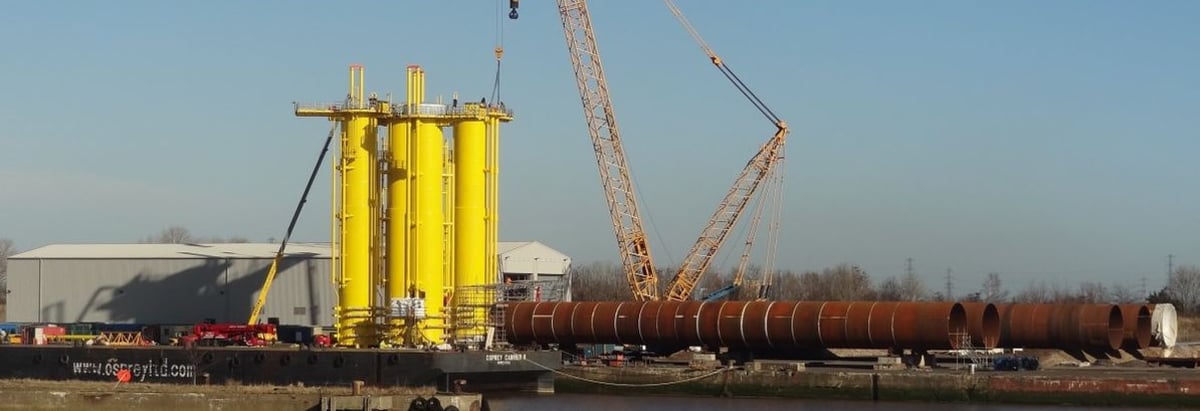
Today, I will be analyzing Prosafe SE’s (OB:PRS) recent ownership structure, an important but not-so-popular subject among individual investors. Ownership structure of a company has been found to affect share performance over time. The effect of an active institutional investor with a similar ownership as a passive pension-fund can be vastly different on a company's corporate governance and accountability to shareholders. While this may be more interesting for long-term investors, short-term investors can also benefit by paying attention to when these institutions trade in order to take advantage of the heightened volatility. Therefore, I will take a look at PRS's shareholders in more detail.
See our latest analysis for ProsafeInstitutional Ownership
With an institutional ownership of 36.39%, PRS can face volatile stock price movements if institutions execute block trades on the open market, more so, when there are relatively small amounts of shares available on the market to trade These moves, at least in the short-term, are generally observed in an institutional ownership mix comprising of active stock pickers, in particular levered hedge funds, which can cause large price swings. For PRS shareholders, the potential of this type of share price volatility shouldn't be as concerning as hedge fund ownership is is not significant,indicating few chances of such sudden price moves. While that hardly seems concerning, I will explore further into PRS's ownership type to find out how it can affect the company’s investment profile.Insider Ownership
I find insiders are another important group of stakeholders, who are directly involved in making key decisions related to the use of capital. In essence, insider ownership is more about the alignment of shareholders' interests with the management. PRS insiders hold a minor stake in the company, which somewhat aligns their interests with that of shareholders. However, a higher level of insider ownership has been linked to management executing on high-returning projects instead of expansion projects for the sake of apparent growth. It would also be interesting to check what insiders have been doing with their shareholding recently. Insider buying can be a positive indicator of future performance, but a selling decision can be simply driven by personal financial requirements.General Public Ownership
The general public holds 6.97% stake in PRS, thus, representing an important class of owners. This size of ownership, while considerably large for a public company, may not be enough to change company policy if the decision is not in sync with other large shareholders.Private Equity Ownership
Private equity firms hold a 48.47% stake in PRS. With a stake of this size, they can be influential in key policy decisions. This is a positive sign for potential investors as these firms play an important role in aligning company policy with shareholder returns.Private Company Ownership
Another group of owners that a potential investor in PRS should consider are private companies, with a stake of 8.07%. While they invest more often due to strategic interests, an investment can also be driven by capital gains through share price appreciation. An ownership of this size indicates a strong financial backing and has the potential to influence PRS's business strategy. Thus, investors should dig deeper into PRS's business relations with these companies and how it can affect shareholder returns in the long-term.Next Steps:
The company's high institutional ownership makes margin of safety a very important consideration to existing investors since long bull and bear trends often emerge when these big-ticket investors see a change in long-term potential of the company. This will allow investors to reduce the impact of non-fundamental factors, such as volatile block trading impact on their portfolio value. However, ownership structure should not be the only determining factor when you’re building an investment thesis for PRS. Instead, you should be evaluating company-specific factors such as the intrinsic valuation, which is a key driver of Prosafe’s share price. I urge you to complete your research by taking a look at the following:
- Future Outlook: What are well-informed industry analysts predicting for PRS’s future growth? Take a look at our free research report of analyst consensus for PRS’s outlook.
- Past Track Record: Has PRS been consistently performing well irrespective of the ups and downs in the market? Go into more detail in the past performance analysis and take a look at the free visual representations of PRS's historicals for more clarity.
- Other High-Performing Stocks: Are there other stocks that provide better prospects with proven track records? Explore our free list of these great stocks here.
New: Manage All Your Stock Portfolios in One Place
We've created the ultimate portfolio companion for stock investors, and it's free.
• Connect an unlimited number of Portfolios and see your total in one currency
• Be alerted to new Warning Signs or Risks via email or mobile
• Track the Fair Value of your stocks
Have feedback on this article? Concerned about the content? Get in touch with us directly. Alternatively, email editorial-team@simplywallst.com
Simply Wall St analyst Simply Wall St and Simply Wall St have no position in any of the companies mentioned. This article is general in nature. We provide commentary based on historical data and analyst forecasts only using an unbiased methodology and our articles are not intended to be financial advice. It does not constitute a recommendation to buy or sell any stock and does not take account of your objectives, or your financial situation. We aim to bring you long-term focused analysis driven by fundamental data. Note that our analysis may not factor in the latest price-sensitive company announcements or qualitative material.
About OB:PRS
Prosafe
Owns and operates semi-submersible accommodation vessels in South America, North America, and Europe.
Undervalued slight.
Market Insights
Community Narratives



